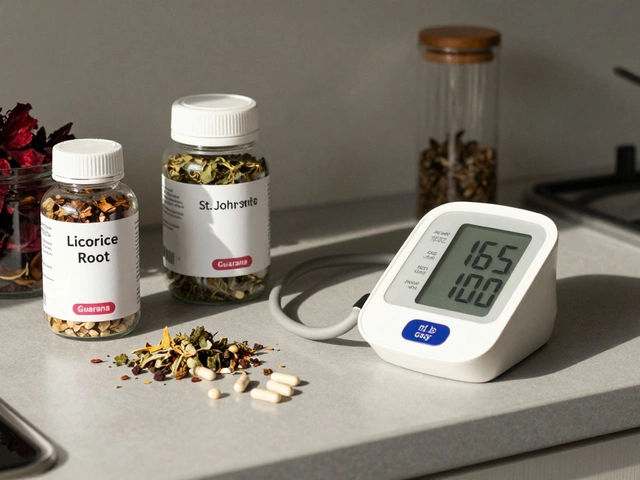Herbs Effects: What They Do for Your Body and How to Use Them Safely
Herbs have been part of Indian kitchens and medicine cabinets for centuries. Some people swear by turmeric for joint pain, while others rely on ashwagandha to calm stress. But not every herb is a miracle cure, and a few can actually hurt you if you’re not careful. This guide breaks down the most talked‑about effects, points out common pitfalls, and shows you how to pick reliable products.
Top Benefits You’ll Hear About
Most listeners hear about three big perks: anti‑inflammation, immune support, and stress relief. Turmeric’s curcumin is widely studied for reducing swelling in arthritis. If you add a pinch to your curry or sip a warm milk‑turmeric drink, you may notice less joint ache after a few weeks.
Ashwagandha, an adaptogen, helps the body cope with cortisol spikes. Many users report easier sleep and steadier moods when they take 300‑500 mg of a standardized extract before bedtime.
Ginseng is another favorite for a quick energy lift. Unlike coffee, it doesn’t cause a jittery crash for most people, but you should limit it to 200 mg a day to avoid insomnia.
When Herbs Can Turn Harmful
Not all herbs are harmless. Some, like certain traditional Ayurvedic formulations, may contain heavy metals if sourced poorly. The post “Are Ayurvedic Medicines Safe?” warns about contamination and urges you to check for GMP certification.
Kidney health is a common concern. The article “Herbs That Harm Your Kidneys” lists high‑oxalate herbs such as horsetail and certain licorice extracts that can aggravate kidney stones. If you have a history of kidney issues, steer clear of those.
Interactions with prescription drugs are another red flag. For example, St. John’s wort can lower the effectiveness of birth control pills and some heart medications. Always tell your doctor about any herbal supplement you plan to use.
Choosing Safe Herbal Supplements
Here’s a quick checklist to make sure you’re buying quality products:
- Look for third‑party testing. Look for logos from labs like USP or NSF on the label.
- Check the ingredient list. Pure extracts should list the herb name and the extract ratio (e.g., 10:1). No mystery blends.
- Read the sourcing story. Companies that explain where the plant is grown and how it’s harvested are usually more transparent.
- Beware of overstated claims. If a product promises “cure cancer” or “instant weight loss,” it’s likely a scam.
The post “How to Choose the Best Herbal Supplements” recommends buying from brands that provide a batch‑specific Certificate of Analysis. This document shows exactly what’s inside each bottle.
Practical Tips for Using Herbs Daily
Start small. Add a quarter‑teaspoon of turmeric powder to your daily smoothie and see how you feel after a week. For extracts, follow the manufacturer’s dosage—usually one or two capsules with food.
Keep a simple journal. Note the herb, dose, time of day, and any changes you notice. After two weeks, you’ll have a clear picture of what works for you.
Remember, herbs complement a healthy diet, not replace it. Pair them with balanced meals, regular exercise, and adequate sleep for the best results.
By understanding the real effects, staying alert to risks, and choosing tested products, you can enjoy the benefits of herbs without unnecessary worries. Happy, healthy living starts with informed choices.





